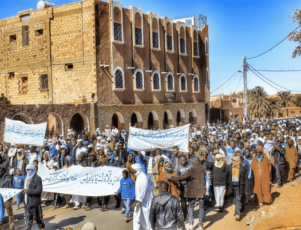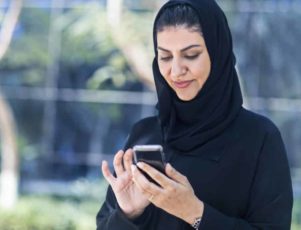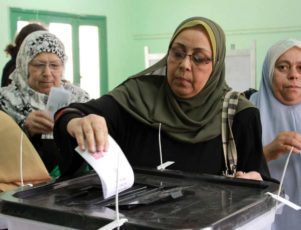Representing a new frontier of innovation in Africa, non-profit technology collective Ushahidi is developing African solutions to African problems
“If it works in Africa, it will work anywhere,” is the motto of Ushahidi, a Kenyan non-profit technology collective which designs and builds open source software and digital tools to help people in the developing world.
Indeed, while in the West technological possibilities are being stretched to their bounds, across Africa something as seemingly straightforward as an Internet connection is unreliable. Figures from the East African Community (EAC) suggest 90% of schools and 30% of hospitals are still off-grid. Only 24% of the developing world is connected to the internet. And, as Ushahidi comments, “power spikes and outages are everyday occurrences in Nairobi and across Sub-Saharan Africa, no matter your income level”. But in a region lacking adequate roads and clean water, developing reliable Internet connectivity is simply not a priority for governments.
There are a number of Western companies working to solve the problem – and at the same time bringing their products to the world’s next five billion Internet users. For example Google has ProjectLink Uganda and LoonBalloon, and Microsoft is experimenting with the TV White Spaces spectrum. But Ushahidi has developed an African solution that really might solve the African problem.
The Internet back-up generator BRCK
Designed to be an “internet back-up generator”, Ushahidi has developed BRCK, a piece of hardware that offers rugged and reliable connectivity. Working like a phone, it can be used in any area that gets mobile signal, as it works by intelligently and seamlessly switching as per the need between the strongest network types in the vicinity (broadband, Ethernet cable, Wifi, CDMA, and 3G or 4G mobile phone networks). It supports up to 20 wireless connections at a time. And it also has up to 16 gigabytes of storage space and a BRCK Cloud connection so it can serve as a back-up server and sync with connected devices and cloud applications.
Designed to face Africa-specific environments, the portable hardware handles the heat and dust of even the most demanding environments. And while it connects to the mains, is also comes with about 8 hours of power back up, can be charged via a car battery, or plugged to a solar charger, combating the region’s lack of reliable energy sources.
“As the next 4.5 billion people (65% of the world) start coming online, the need for rugged, reliable, and simple connectivity becomes critical in places with poor infrastructure and limited resources. While existing technologies work well in modern cities, the demands of emerging markets necessitates a rethinking of how technology is engineered, packaged, delivered, and supported. BRCK was conceived in exactly this type of environment. In particular, our struggles in Africa with reliable connectivity inspired us to rethink the entire concept of rugged internet access device – designing the world’s first go-anywhere, connect-to-anything, always available internet device,” says Ushahidi.
Ushahidi driving innovation in Africa
Indeed, Ushahidi, which is part of the thriving Kenyan tech start-up scene – nicknamed the Silicon Savannah -, developed BRCK as a solution to its own problems. “As a company full of engineers working in places with poor infrastructure, we simply couldn’t get connected as reliably as our peers in the developed world”.
Ushahidi designed and developed BRCK with $172,000 raised on Kickstarter. And in doing so, pushed another frontier of innovation in Africa. Crowdfunding is a relatively new phenomenon in the region, but Ushahidi’s Kickstarter success has kick-started crowd-funded entrepreneurship and innovation.
 Expanding technology’s reach
Expanding technology’s reach
Co-founder Ory Okolloh, previously Google’s policy manager for Africa and named by Forbes as “one of the most influential women in global technology”, is committed to bringing the benefits of technological innovation to Africa. The company’s first project, for example, was a location-based crowdsourcing crisis-tracker map developed in the wake of Kenya’s 2007 post-election violence. Empowering individuals to document and report incidents in real time, the software allows users to text, email, tweet, or photograph information which is then plotted on to a map. The idea is that media, governments, and relief organizations can see a live picture of what’s happening on the ground and can target responses in real-time. The map has since been used in India during the 2008 Mumbai attacks, during the Haiti earthquake in 2010, and in Japan during the tsunami in 2011. It has also been used to log medicine shortages across Africa and reports of violence in the Middle East. The company takes its name from this piece of software; “Ushahidi” means “testimony” in Swahili.
And the company is currently expanding its reach with the launch of a digital classroom – the Kio Kit. Ushahidi explains: “You open a box and there are 40 tablets inside, there is a BRCK inside and on the BRCK there is a Linux [open-source] server — so we can locally cache educational content, and serve it up to the tablets.” Ever prepared for the African environment, the modem is in a watertight, hardened-plastic wheeled suitcase and acts as a wireless charging station.
African solutions to African problems has become a bit of a catchphrase, but the impact of socially motivated entrepreneurs could have huge implications for the technological development of the region.



 The Middle East, which currently holds half the world’s conventional oil resources and 40% of its gas, is often portrayed as a region under threat from fracking as its traditional oil and gas customers become self-sufficient producers. But while it has perhaps been slower to exploit shale than most other regions,
The Middle East, which currently holds half the world’s conventional oil resources and 40% of its gas, is often portrayed as a region under threat from fracking as its traditional oil and gas customers become self-sufficient producers. But while it has perhaps been slower to exploit shale than most other regions, 




 Low turnout in the first round of Egyptian parliamentary elections
Low turnout in the first round of Egyptian parliamentary elections